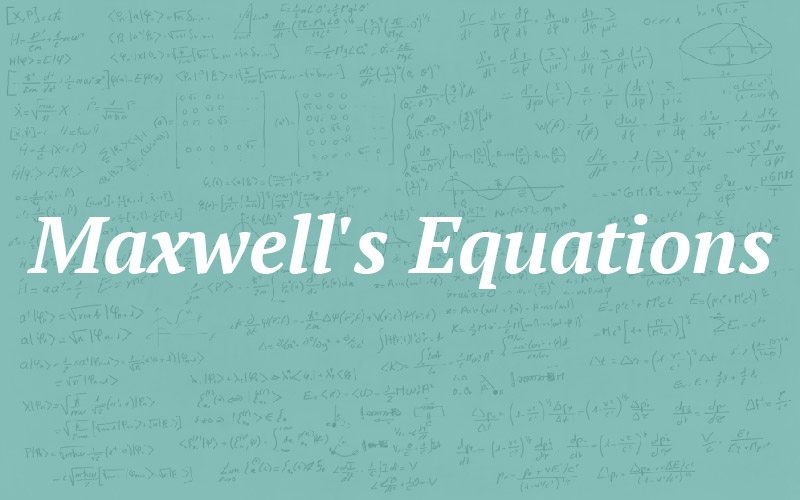Maxwell’s Equations
In the 19th century, new discoveries and developments in electricity and magnetism were pushing the boundaries of mathematics. In 1861-62, James Clerk Maxwell published his first iterations of a series of formulas that ended up serving as the basis for the new field of electrodynamics. A series of concise and elegant formulas that describe the basic principles of electromagnetism, Maxwell’s equations are often divided into a “microscopic” set and a “macroscopic” set. The microscopic set focuses on the properties of electricity and magnetism on a small, even quantum level, while the macroscopic set of equations focuses on large-scale electromagnetic behaviors and their applications.
Because of the complicated nature of measuring changes and interacting effects of physical and chemical properties, Maxwell’s complicated formulas are generally not a topic in introductory physics. Mathematicians and physicists who use them must be familiar with calculating the electric displacement, magnetization, and charge density associated with various elements and materials. Maxwell’s equations are generally dependent on time; because electromagnetic force changes over time, it is a particularly important element to consider when computing in electrodynamics.
Four equations describe properties of the electromagnetic fields. They include two formulas concerned with calculations of the sources of electricity (electric charges and electric currents) and their measurements (charge density and current density), and the interactions between electric forces and magnetic forces. The other two of these equations describe how electromagnetic fields “circulate” around their sources, considering fluctuations of time and outside energies, such as energy absorbed in the presence of light. In the 20th century, the microscopic focus of Maxwell’s formulas has been altered slightly at the quantum level to account for new understandings of quantum electrodynamics, but this has not changed how the formulas have been generally applied in the fields of electromagnetic technology.
Expand your knowledge universe in just 5 minutes a day via bite-sized email courses.
Share with friends:

